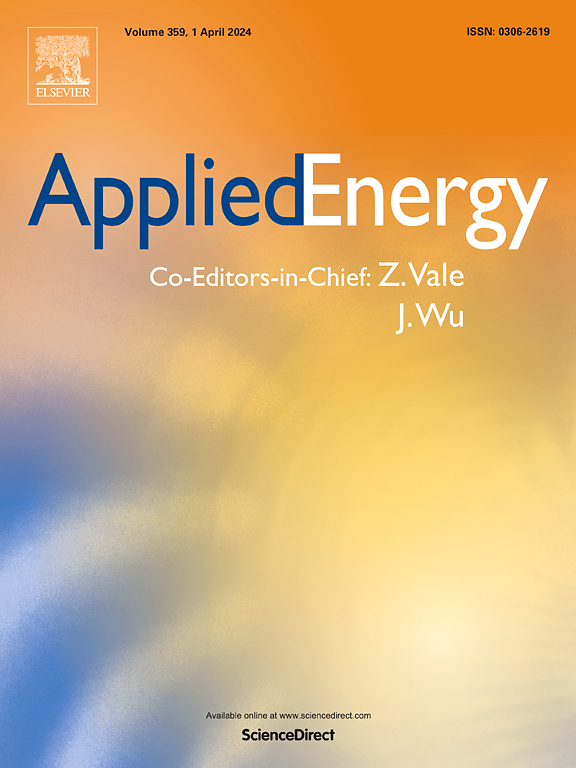钒氧化还原液流电池高容量保持和高能效的电解液不对称自动再平衡
IF 11
1区 工程技术
Q1 ENERGY & FUELS
引用次数: 0
摘要
钒氧化还原液流电池在长期运行下的容量衰减和性能下降是其在大规模储能系统中应用的关键问题。本文介绍了一种创新的电解再平衡技术——不对称自动再平衡(AAR),以实现vrfb在长期运行中的高容量保留和高效率。准备了三个vrfb进行性能比较,其中一个不进行再平衡(NR),一个进行自动再平衡(AR),一个进行自动再平衡(aar)。并从理论上分析了三种不同的电解液再平衡方式下vrfb的容量和性能下降机理。在vrfb上进行了长期充放电循环试验,根据电流、温度和电解质流速验证AAR的有效性。在长期运行下,AAR表现出最稳定的性能,电解质不平衡可以忽略不计。此外,与NR(82.77%)和AR(82.98%)相比,AAR实现了最稳定的容量保持和最高的能源效率(84.66%)。最后,通过理论分析对电解液体积变化进行了预测,与实验结果一致。本文章由计算机程序翻译,如有差异,请以英文原文为准。
Asymmetric auto-rebalancing of electrolyte for high capacity retention and high energy efficiency of vanadium redox flow batteries
Capacity fade and performance degradation under long-term operation are critical concerns in the application of vanadium redox flow batteries (VRFBs) in large-scale energy-storage systems. This study introduces an innovative electrolyte-rebalancing technique named asymmetric auto-rebalancing (AAR) to achieve high capacity retention and high efficiency of VRFBs during long-term operation. Three VRFBs—one each without rebalancing (NR), with auto-rebalancing (AR), and with AAR—were prepared for a performance comparison. Also, the capacity and performance degradation mechanisms of VRFBs with three different electrolyte rebalancing methods were theoretically analyzed. Long-term charge–discharge cycling tests were conducted on the VRFBs to verify the effectiveness of AAR according to the current, temperature, and electrolyte flow rate. AAR showed the most consistent performance under long-term operation, with negligible electrolyte imbalance. Further, AAR achieved the most stable capacity retention and highest energy efficiency (84.66 %) compared to NR (82.77 %) and AR (82.98 %). Finally, the electrolyte volume change was predicted by a theoretical analysis, which was consistent with the experimental results.
求助全文
通过发布文献求助,成功后即可免费获取论文全文。
去求助
来源期刊

Applied Energy
工程技术-工程:化工
CiteScore
21.20
自引率
10.70%
发文量
1830
审稿时长
41 days
期刊介绍:
Applied Energy serves as a platform for sharing innovations, research, development, and demonstrations in energy conversion, conservation, and sustainable energy systems. The journal covers topics such as optimal energy resource use, environmental pollutant mitigation, and energy process analysis. It welcomes original papers, review articles, technical notes, and letters to the editor. Authors are encouraged to submit manuscripts that bridge the gap between research, development, and implementation. The journal addresses a wide spectrum of topics, including fossil and renewable energy technologies, energy economics, and environmental impacts. Applied Energy also explores modeling and forecasting, conservation strategies, and the social and economic implications of energy policies, including climate change mitigation. It is complemented by the open-access journal Advances in Applied Energy.
 求助内容:
求助内容: 应助结果提醒方式:
应助结果提醒方式:


